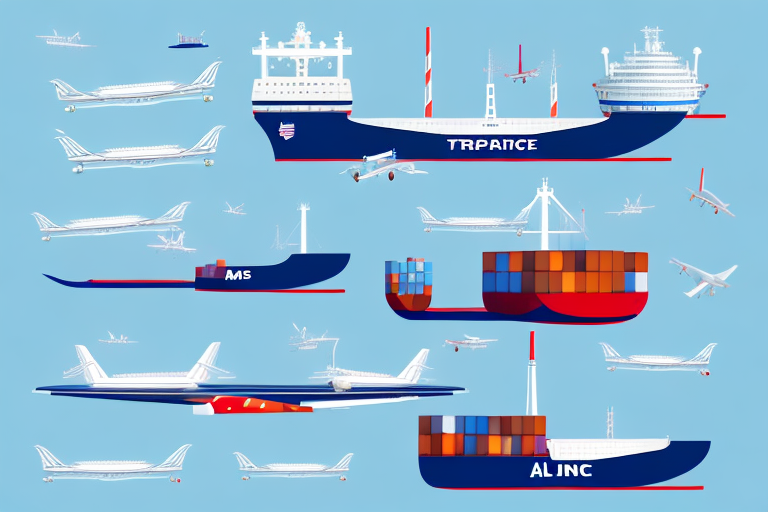Overview of the US Shipping Industry
The shipping industry is a cornerstone of the US economy, facilitating the movement of billions of packages and goods annually. In 2023, the industry continues to thrive, driven by the exponential growth of e-commerce and the increasing demand for efficient logistics solutions. According to the Statista Shipping Report 2023, the US shipping market is projected to reach a revenue of $350 billion by the end of the year.
The industry encompasses various modes of transportation, including air, rail, marine, and trucking. Ground transportation remains the predominant method for domestic shipping due to its flexibility and cost-effectiveness. However, the sector faces significant challenges, notably the ongoing shortage of truck drivers. The American Trucking Associations reports a shortage of approximately 60,000 drivers, a number expected to grow as the workforce ages and fewer new drivers join the industry. This deficit has led to increased wages and benefits as carriers compete to attract and retain qualified personnel.
Key Factors in Choosing a Shipping Carrier
Cost
Shipping costs are a primary consideration for both businesses and individuals. Rates vary based on package weight, dimensions, distance, and the chosen service level. It's essential to compare pricing structures across carriers to find the most cost-effective option for your specific needs.
Delivery Speed
Depending on your urgency, delivery speed can significantly impact your choice. Carriers offer a range of options from same-day and overnight to standard and economy shipping. Balancing speed with cost is crucial for optimizing your shipping strategy.
Coverage Area
Ensure that the carrier you select can deliver to your desired destinations. Some carriers may have limitations in certain regions or international locations. Verifying coverage can prevent delays and ensure reliable service.
Environmental Impact
With increasing awareness of sustainability, the environmental practices of shipping carriers are becoming more relevant. Some carriers offer carbon-neutral shipping options or have initiatives aimed at reducing their carbon footprint.
Comparative Analysis of Top Shipping Carriers
Shipping Rates
The major players in the US shipping industry include FedEx, UPS, and USPS. While FedEx and UPS are known for their premium services and comprehensive logistics networks, USPS offers more affordable rates for smaller packages and domestic shipments. For example, USPS Priority Mail typically costs less than FedEx Ground for similar package sizes.
Delivery Time
FedEx and UPS provide guaranteed delivery times for their expedited services, such as overnight and two-day shipping. USPS also offers Priority Mail Express, which ensures overnight delivery to most US locations. However, standard USPS services do not guarantee specific delivery times, which can be a critical factor for time-sensitive shipments.
Service Quality
Service quality encompasses reliability, customer service, and the efficiency of logistics operations. FedEx and UPS consistently rank high in customer satisfaction surveys due to their reliable delivery schedules and robust customer support. USPS, being a government-run entity, may exhibit variability in service quality depending on the location and workload of individual post offices.
Security and Insurance
When shipping valuable items, security and insurance are paramount. FedEx and UPS offer extensive insurance options and advanced security measures, including signature-required deliveries and package tracking. USPS provides basic insurance coverage, but higher value items may require additional insurance or alternative carriers.
Tracking and Communication
All three carriers offer comprehensive tracking systems. FedEx and UPS provide real-time updates and proactive notifications via SMS and email, enhancing transparency and customer trust. USPS also offers tracking, though its notification options are generally less robust compared to its competitors.
Additional Services and Innovations
Packaging and Shipping Supplies
FedEx, UPS, and USPS offer a variety of packaging solutions to cater to different shipping needs. FedEx and UPS provide specialized packaging services, including insulated containers for temperature-sensitive items. USPS offers flat-rate boxes, which can be a cost-effective solution for certain shipments.
Technological Innovations
The shipping industry is embracing technology to enhance efficiency and customer experience. Innovations such as drone delivery, automated sorting systems, and AI-driven logistics platforms are being tested and implemented. For instance, UPS has been piloting drone deliveries in rural areas to expedite last-mile delivery.
Sustainability Initiatives
Environmental sustainability is becoming a key focus. Carriers are investing in electric vehicles, optimizing delivery routes to reduce emissions, and using recyclable packaging materials. USPS has introduced a fleet of electric delivery vehicles in select cities, while FedEx has committed to net-zero carbon emissions by 2040.
Choosing the Best Carrier for Your Needs
Business vs. Individual Requirements
Businesses often require solutions tailored to high-volume shipping, including discounted rates, dedicated account management, and integrated e-commerce tools. FedEx and UPS excel in providing comprehensive business services, whereas USPS offers competitive rates for bulk mailing and small businesses.
Negotiating Rates
High-volume shippers can negotiate better rates by leveraging their shipping volume. Both FedEx and UPS offer loyalty programs and volume-based discounts, making it advantageous for businesses with substantial shipping needs to engage in rate negotiations with their carriers.
Maximizing Savings
Consumers can save on shipping costs by consolidating shipments, choosing slower delivery options when time permits, and utilizing online shipping tools to compare rates. Additionally, taking advantage of flat-rate shipping options offered by USPS can lead to significant savings for certain package types.
Future Trends in the US Shipping Industry
The US shipping industry is poised for continued evolution, driven by technological advancements and changing consumer behaviors. Key trends include:
- Automation and Robotics: Automated sorting and delivery systems are increasing efficiency and reducing human error.
- Sustainable Practices: Carriers are investing in green technologies to minimize their environmental impact.
- Advanced Analytics: Data-driven strategies are enhancing route optimization and demand forecasting.
- Last-Mile Delivery Solutions: Innovations like drone delivery and autonomous vehicles are transforming the final leg of the shipping process.
Staying abreast of these trends is essential for businesses and consumers alike to leverage the benefits of modern shipping solutions.
Future Outlook for the US Shipping Industry
Looking ahead, the US shipping industry is expected to continue its growth trajectory, fueled by the persistent expansion of e-commerce and the adoption of innovative technologies. However, challenges such as rising fuel costs, regulatory changes, and the ongoing driver shortage may impact the industry's dynamics. Carriers that prioritize efficiency, sustainability, and customer-centric services will likely lead the market. According to the Forbes Tech Council, the integration of AI and machine learning will play a pivotal role in shaping the future of shipping, enabling more intelligent and responsive logistics networks.
Conclusion
Choosing the right shipping carrier is a critical decision that can impact both cost efficiency and customer satisfaction. By evaluating key factors such as cost, delivery speed, service quality, and additional services, you can make an informed choice tailored to your specific needs. Carriers like FedEx and UPS offer robust solutions for businesses and individuals requiring premium services, while USPS remains a cost-effective option for smaller, domestic shipments. As the shipping industry continues to evolve with technological advancements and sustainable practices, staying informed will help you leverage the best shipping options available.
For more detailed comparisons and insights, visit our comprehensive guide on shipping carriers at ShipScience.








